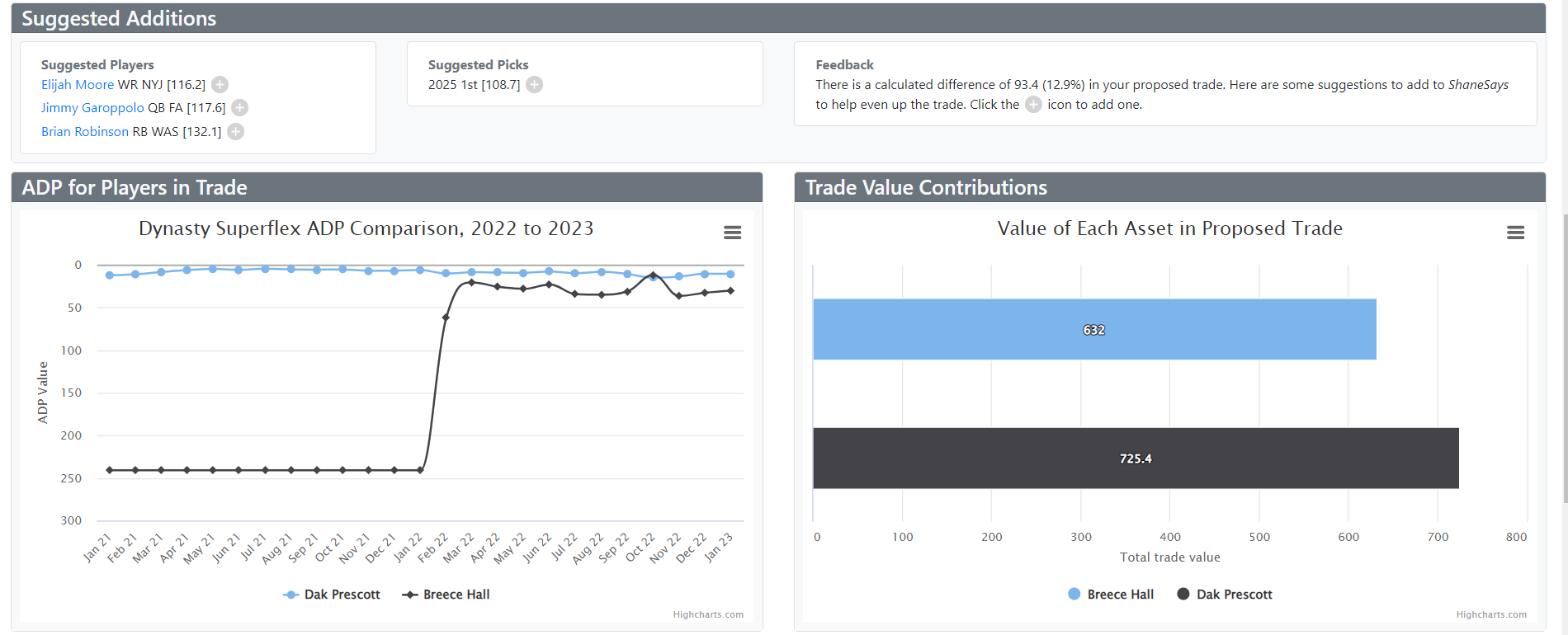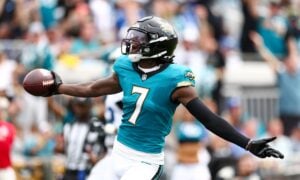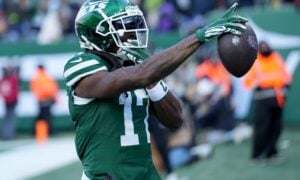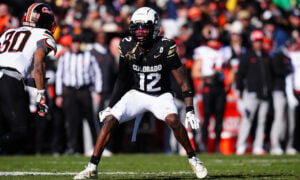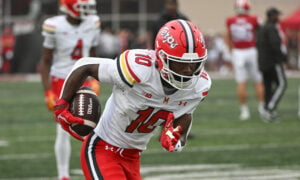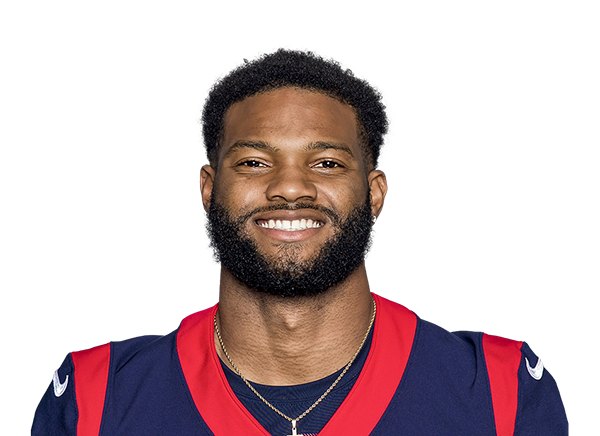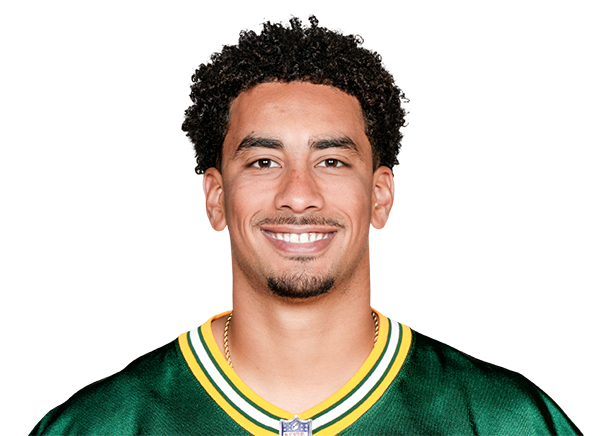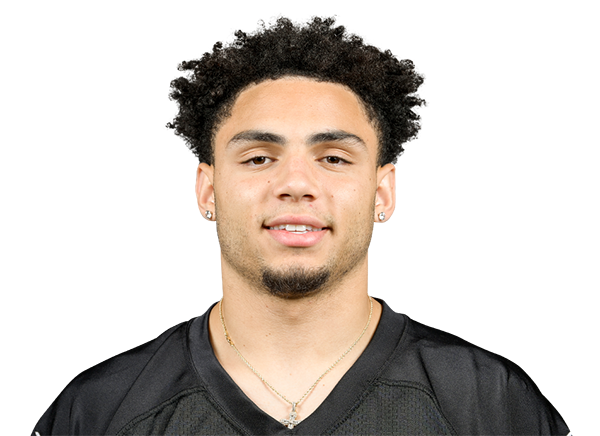Dynasty Fantasy Football Mailbag: Which Second-Year Receivers Should You Buy?
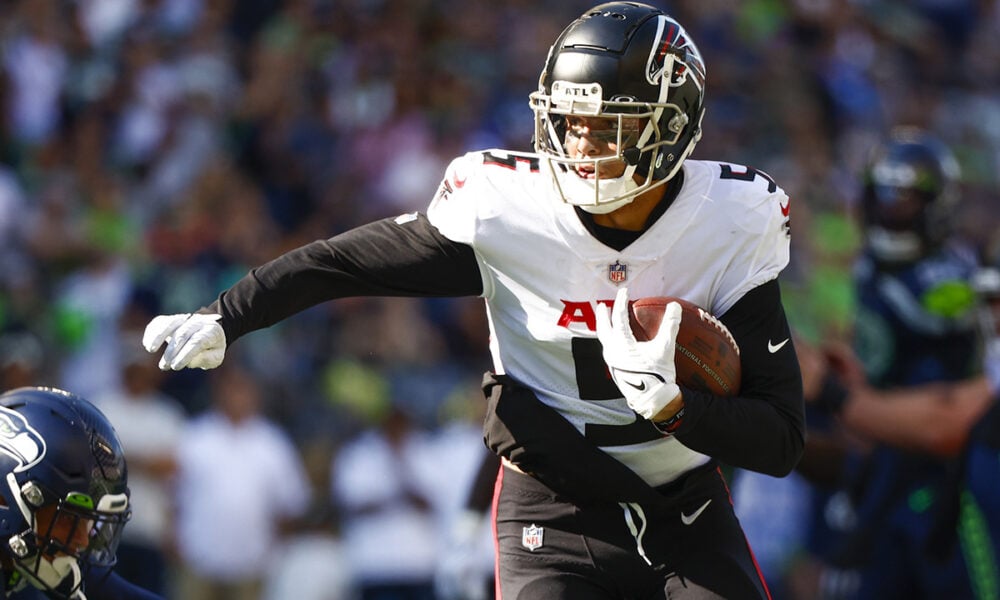
Welcome back to the DLF Mailbag, the preeminent mailbag in all the dynasty fantasy football land. This year I’ll be answering questions from you via Twitter, Discord, or the old-fashioned way (via email).
It doesn’t matter how you get me your questions, just make sure you get them to me and I’ll answer them every week.
The off-season is heating up! What questions are rattling around your brain? Let me know and I'll get to them in the next edition of the @DLFootball Dynasty Fantasy Football mailbag!
— Shanesays (@ShaneIsTheWorst) February 25, 2023
Buy these second-year wide receivers now!
Which three 2nd year WRs should fantasy owners be buying this off-season?
— Keith Jackson (@dynasty_jax) February 25, 2023
The 2022 rookie wide receiver was sublime. Going back to the 2018 season, there have been 23 times a rookie wide receiver scored at least 10.5 fantasy points per game. Five of those instances came last year. Chris Olave (13.21), Garrett Wilson (12.69), Christian Watson (11.72), Jahan Dotson (10.88), and Drake London (10.51) all eclipsed the feat last year.
I’m huge on historical precedent and most of the names who have previously scored at least 10.5 PPG in their rookie season (since 2018) are pretty impressive, with the exception of Laviska Shenault, Preston Williams, and Chase Claypool. (I’m still holding out some hope for Elijah Moore.)
I’ve heard whispers of buzz surrounding Treylon Burks, so looking at historical comps, (8.6 PPG in his rookie season), there have been 192 wide receivers who have scored 8.6 per game or less in their rookie season, and the list is filled with bust after bust after bust. There are multiple wide receivers from last year’s class on this list including Skyy Moore, Alec Pierce, Romeo Doubs, and Wan’Dale Robinson. I have little to no interest in any of these receivers as a buy.
If I have multiple second-round rookie picks I would be fine sending out an offer a second for Burks, who did have an impressive 17.6% target share as a rookie, but that is the only instance I would do so. Another player I’m not buying is George Pickens. Pickens’s production (9.8 PPG) was fine, but his target share of 15.6% doesn’t scream target hog though he’s often priced as an elite dynasty asset.
Instead of buying “low” on a player like Burks, I’d rather conserve those assets and buy “high” on another player. This is my approach to most trades. I don’t like wasting capital on assets that can’t provide a material change to my roster when possible.
I say all this to say, my buys from the second-year receiver class are limited to that first subset of players discussed, Olave, Wilson, Watson, Dotson, and London. Of that group, I am only buying the trio of Olave, Wilson, and London.
Though both Watson and Dotson outscored London, you need to look a little deeper to understand why London should be the preferred buy (I just assume you already know that Olave and Wilson are preferred). Watson scored a touchdown on 10.6% of his targets last season, and Dotson did so on 11.5% of his targets, compared to just 3.4% for London. For better context of how high Dotson and Watson’s TD/Target rate was last year, Davante Adams (who led the league with 14 touchdowns) scored on a 7.8% rate and Travis Kelce (second in the league with 12 touchdowns) scored on 7.9% of his targets.
Adams, one of the most prolific touchdown-scoring wide receivers of our generation, only once in his nine-season career had a TD/Target rate greater than Dotson’s 11.5% rate last year when he scored 18 during his ridiculous 2018 year. For his career, Adams’ TD/Target rate is 7.3. Do we think that Watson or Dotson are going to be better at scoring touchdowns than Adams, or is it more likely last year was an anomaly? I would be less concerned with their outsized touchdown scoring if their target shares were elite, but Watson’s 15.2% share and Dotson’s 15.9% share were just okay. London’s 29.4% target share ranked fifth among wide receivers last year, and if you are an adherent to the Peter Howard ‘targets are earned’ dogma then you know why that matters. If not, just know that targets are earned and are a sticky stat. The smart play if you roster either Dotson or Watson is to tag a second-round rookie pick to them and attempt to trade for London for a cheap tier-up.
Calculate this!
How do you use trade calculators?
— Kevin (@Daboys_22) February 25, 2023
There’s a small cottage industry that’s sprung up around trashing trade calculators. Though I only use them sparingly myself, I see no issue when other dynasty managers use calculators to assist them to craft an offer. In fact, DLF has its own very fine Dynasty Trade Analyzer for just that task. I’m not familiar with other calculators so I can only tell you how I use them and what I like about DLF’s calculators.
Obviously, it gives you a trade value of the deal offered:
Of note, the above league is a start 11, 14-team superflex league so quarterbacks are valued highly. The analyzer also provides you with suggested players to even out the trade (if applicable), and provides the current ADP for the players involved, the value of each specific player involved in the trade.
Finally, it also provides links to any recent trades involving both players (or picks) involved in your particular deal.
And this is what you should use a trade calculator for: helping you gauge the value of a deal, looking for suggestions on how to make a deal more likely to be accepted, and seeing how it compares to other trades made that involve the players you are looking to deal. Use it as a tool in your arsenal, but do not use it as the end-all decision-maker.
Playing the Field(s)
Why can’t I get anything close to startup value for Justin Fields?
— Dangle (@heydangle) February 25, 2023
Though Fields was the QB5 last year with 20.5 PPG, he still gets the side eye from a good bit of the dynasty community. Part of the trepidation around him is how he scored those fantasy points. Fields only threw for more than 200 yards in two of 15 games last season and multiple touchdowns in just five games. In contrast, he didn’t throw any touchdowns in four games last year. His 1,143 rushing yards last season ranked second all-time for a quarterback in a season, and his eight rushing touchdowns tied for 16th all-time. Anytime a quarterback needs to chase the record books as a rusher in order to score fantasy points, the community is probably going to be skittish because we don’t think it’s sustainable.
What if we are wrong though? For example, the record holder for rushing yards in a season at the quarterback position, Lamar Jackson, has four of the top 14 rushing seasons all-time for quarterbacks and has never finished worse than QB8 in points per game in his four starting seasons. Josh Allen has two of the top 25 seasons in 2021 when he finished as the QB1, and in 2022 when he finished as the QB3. Jalen Hurts has two seasons within the top 25 as well, and he’s finished as the QB6 and QB1. Does anyone worry about those players regressing? Surely there will be some regression for Fields in the rushing department, but that should also hold true for him as a passer.
Fields receiving options were awful last year and objectively could have been ranked among the worst in the history of organized football. Cole Kmet was the Bears leading target-getter with 69 last year, followed by Darnell Mooney’s 61, Dante Pettis with 41, and Equanimeous St. Brown wasn’t far behind with 38 targets. Fields still made significant gains as a passer, improving in completion %, TD %, interception %, yards per attempt, adjusted yards per attempt, quarterback rating, and QBR.
And though it may be hard to remember, Fields was actually a good passer while in college with a career 68% completion percentage, and an adjusted yards per attempt of 10.4 yards.
Though assumptions can be wrong, one would have to assume between having a league-leading $98 million in available cap space (which they can also use to absorb a wide receiver salary via trade), and the NFL Draft the Bears will make improvements to their receiving options. Fields isn’t going to suddenly lose his rushing ability, but if he’s given even just one top-tier receiving option (see Josh Allen/Stefon Diggs), he may be able to pull the reins in a bit on the rushing while making up for the difference with his passing.
- Dynasty Fantasy Football Mailbag: Pivoting Away from Jonathan Taylor - August 29, 2023
- Dynasty Fantasy Football Mailbag: Kyle Pitts, Brock Purdy and Roster Construction - August 22, 2023
- Dynasty Fantasy Football Mailbag: Late-Round Stashes and More - August 15, 2023





